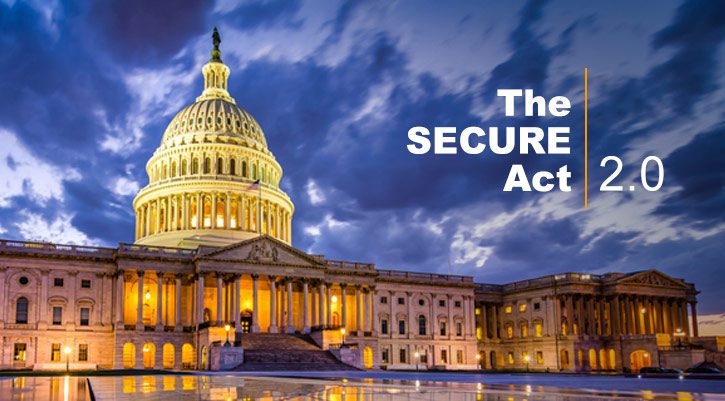Congress is pushing a bill that would help working Americans save for retirement, and it’s currently on its way to the Senate. On March 29, the House of Representatives passed a package of retirement reforms called “Secure Act 2.0” by a vote of 414 to 5. This potential new bill has the ability to help millions of Americans stack up more money for their retirement years with the following three main changes: automatic enrollment in retirement savings plans, changes to the mandatory age for RMDs, and the increasement of catch-up contributions.
Automatic Enrollment in Retirement Savings Plans
Secure Act 2.0 would automatically require employers to enroll eligible workers into their 401(k) or 403(b) retirement plans at a rate of 3% of their salary. Americans struggle when it comes to saving for retirement and this plan aims towards eliminating that. Enrolled workers’ contribution rates would be set to increase 1% each year up to until they hit 10% of their annual income being contributed. Workers would have the ability to opt-out if they so choose, however the difference is that it is required when joining a new company. Businesses with fewer than 10 employees, businesses already enrolled in 401(k) and/or 401(b), businesses opened fewer than three years ago, and churches and government agencies would be exempt.
Changes to Mandatory Age for RMDs
The original Secure Act put this change in motion by raising the required minimum distribution (RMD) age from traditional IRA’s and 401(k)s from age 70 ½ to age 72. Secure Act 2.0 is looking to step this up a notch by again raising the required minimum distribution age from 72 to 73 beginning January 1, 2023. The goal is to raise this age to 75 within the next decade, meaning you’d have more time for your money to grow tax free before being forced to remove it from your retirement savings accounts. Additionally, as of now, if you fail to take your full RMD the excess is hit with a 50% excise tax. Secure Act 2.0 will lessen this penalty to 25%, with a reduction to 10% if the mistake is corrected in a timely manner.
Increased Catch-Up Contributions
At the moment, workers who are at least 50 years of age can make catch-up contributions to their retirement savings accounts above their normal pay in limits. In 2022, workers are able to contribute an extra $6,500 to their 401(k) and/or 403(b) plans after hitting this year’s contribution limit of $20,500. They can also add an additional $3,000 to their SIMPLE IRA accounts after hitting the $14,000 cap in 2022. Under Secure Act 2.0, workers aged 62, 63, or 64 would be able to contribute even more to their accounts. They’d be able to contribute up to $10,000 in catch-up contributions to their 401(k) and 403(b) accounts, as well as up to an additional $5,000 in their SIMPLE IRA accounts.
Although this bill has not become law, the House’s resounding vote of 414 to 5 clearly indicates one thing: we all are coming to agreement that working America needs help saving for retirement. At Bridgelight Financial Advisors we make it one of our top priorities to ensure our clients are on top of this ever-changing financial world. If you are in need of a financial advisor that specializes in helping you make your retirement a successful one, our team at Bridgelight Financial Advisors would love to help you experience confidence in every aspect of your financial plan. Call (203) 795-7080, email [email protected], or schedule an appointment online to meet and get started.
About Bill
Bill Leavitt is the president of Bridgelight Financial Advisors, an independent, privately owned fiduciary financial advisory and financial planning firm. He specializes in working with pre-retirees, retirees, professionals, and women investors, helping them navigate a complicated and ever-changing investment landscape. With over 25 years of experience, Bill serves his clients using his own unique financial planning model, The Wealth Focus™ Process, where he helps clients develop their customized long-term wealth strategy in four comprehensive steps. A Connecticut native, Bill resides in southern Connecticut with his wife, Laura, and their three daughters. To learn more about Bill, connect with him on LinkedIn.
